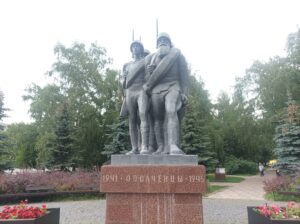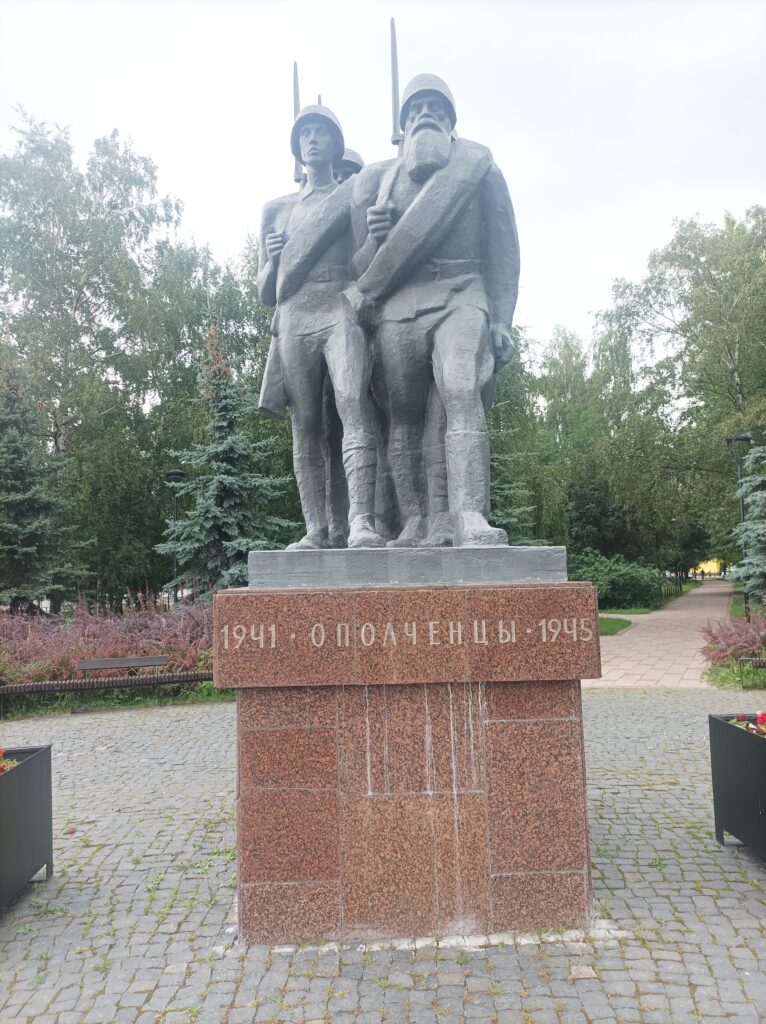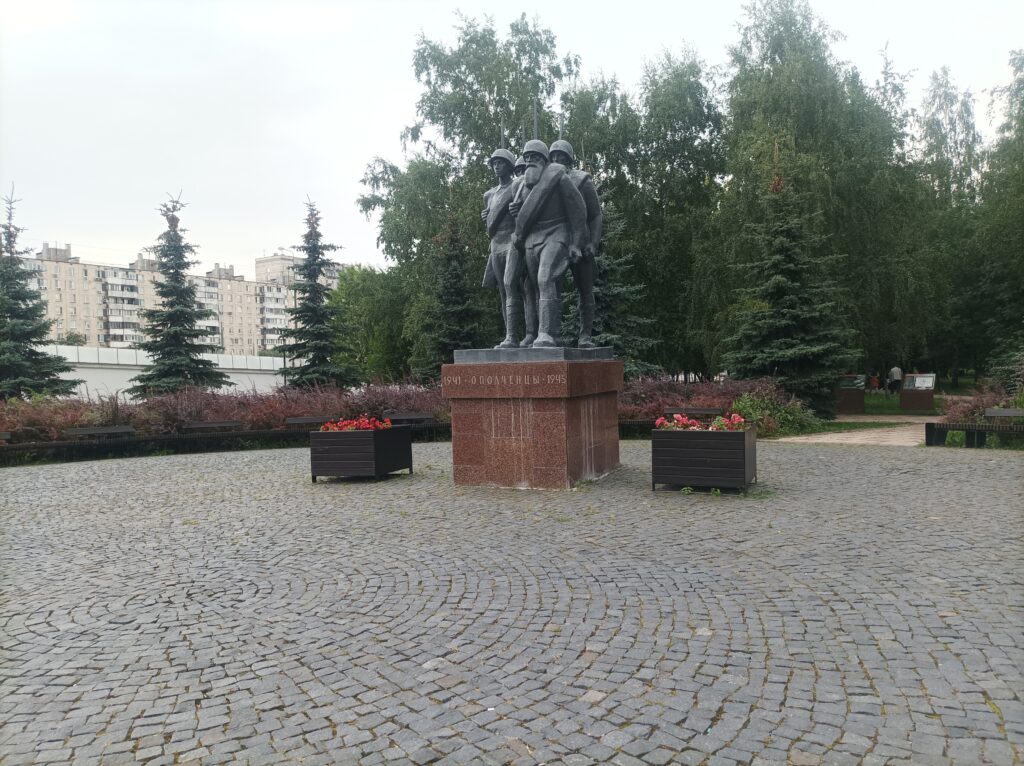Monument to Muscovites-Fighters of the People’s Militia

In the first hours and days after the attack of nazi Germany on the Soviet Union, at the beginning of the Great Patriotic War, meetings of workers and employees took place at the plants and factories of Moscow (Dynamo, Sergo Ordzhonikidze, Krasnaya Roza, Bolshevichka, etc.). Muscovites condemned the aggressors with anger and indignation and expressed their readiness to stand up for the Motherland with their breasts. Thousands of people, who for various reasons were not subject to mobilization, demanded immediate dispatch to the front in order to personally take part in the armed struggle against the enemy. The flow of such statements increased every day. It was planned to mobilize 200 thousand people in the people’s militia division in the city of Moscow and 70 thousand people in the Moscow region. The districts of the Moscow Region formed separate units and poured them into divisions at the direction of the headquarters of the Moscow Military District. The formation of the militia took place on a voluntary basis. It was planned that each of the 25 districts of the capital that existed at that time should form its own division of the people’s militia. By July 7, 1941, it was required to form 12 divisions in the capital. The age limit of the militia was from 17 to 55 years. Nevertheless, in fact, older Muscovites also got into the militia, regardless of their state of health and age. 16-year-olds aspired to the front and even 15-year-old boys and girls, as well as elderly people who were over 60, and in some cases over 70 years old. This is evidenced by the lists of militia members preserved in the archives. In addition, the requirement of the resolution of the Military Council of the Moscow Military District of July 2, 1941, not to accept workers and employees of factories, People’s Commissariats of armaments, ammunition, aviation industry, machine tools and other enterprises that carried out particularly important defence orders into the militia was not always fulfilled. Initially, the militias were not considered military personnel, service in the people’s militia did not have the status of «military». The militias and their families did not have the benefits due to the personnel of the Red Army. However, they retained the average earnings at their place of work, and volunteers in their institutions, enterprises and the organizations were officially listed as «having gone on a business affair to the People’s militia». The rank and file, junior staff, 50% of platoon commanders, up to 40% of company commanders, medical staff and the entire political staff were recruited from workers, employees and students of the districts. The rest of the commanding staff was completed at the expense of the Red Army personnel. The monument to the militia was installed in 1974 in the square at the intersection of Marshal Zhukov Avenue and Narodnogo Opolcheniya Street in honour of the People’s militia divisions that fought the fascist hordes near Moscow. The sculptural composition represents a group of Militia, fully equipped and ready to fight. Only in Moscow, during the first four days of the war, 12 divisions of the People’s militia were created, in memory of which in 1964 Narodnogo Opolcheniya Street was named.
Address: Moscow, intersection of Marshal Zhukov Ave. and Narodnaya Opolcheniya str.

